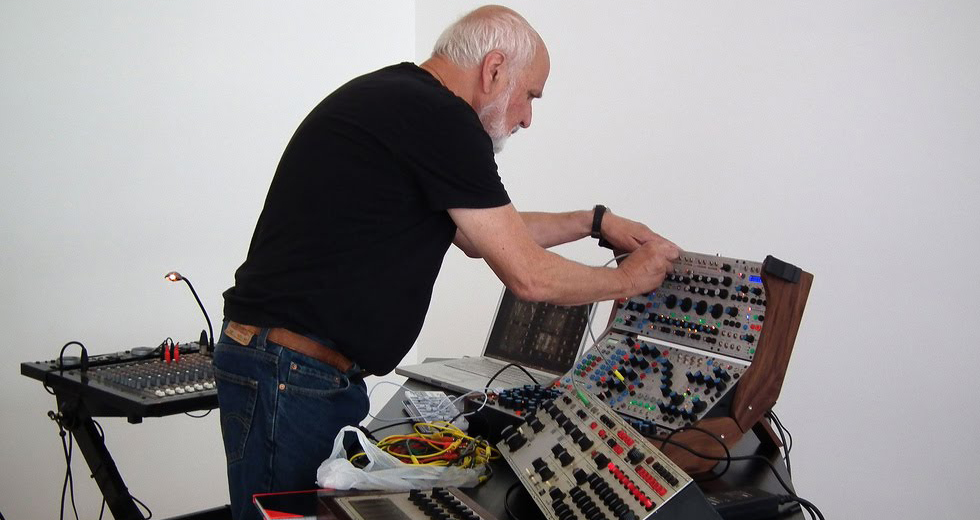Sine Painting: The Synthesis of Subotnick
One of America’s earliest composers working entirely within the electronic spectrum, the “grandfather of electronica” Morton Subotnick will be performing classic works such as ‘Silver Apples of the Moon’ alongside Berlin-based visual artist Lillevan tonight at Museo Reina Sofia. Max Cole does his best to describe the sounds Morton makes…

The path of a sound revolutionary is seldom a sure one, but Morton Subotnick has walked it squarely for the last five decades. Those synths and keyboards we know so well? All those concepts of tonality we take for granted? Morton Subotnick plays with them for a laugh. The thought that the free-flowing albums Silver Apples Of The Moon and The Wild Bull were made by a mortal man are pretty hard to grasp as it is, even before we begin to learn anything about Morton and his life in sound.
Listening to Subotnick’s Silver Apples of The Moon is a trippy experience even now, so imagine how it would have sounded in 1967. It was Morton’s faith in the listeners (that they’d not just climb aboard a wildly unconventional ride, but stay on to the end) that made the album such a success. It’s perhaps easy to attribute its critical acclaim to the psychotropic summer of love, but the album is much more than just a product of its time. The alien soundscape is more like a field recording of a Martian rain forest than an adventure in synthesis, bridging the gap between the avant-garde works of Ligeti and Stockhausen, the musique concrète of Boulez and Xenakis, and the experimental compositions of Frank Zappa, The Residents and Captain Beefheart.
Part of this was down to the “Music Box” that Don Buchla, Ramon Sender Barayón and Subotnick built in the 60s at the San Fransisco Tape Music Center. Eschewing the conventional keyboard for a pressure-sensitive, noteless metal strip touch-plate, the Music Box was quite revolutionary (and when combined with strange signal-path routings, audio effects and its own peculiar temperaments), the machine was capable of some pretty far-out sounds. Another part of the success of Subotnick’s works on the Buchla synth (as it became known) was his own innate musicality, as he was able to arrange a variety of whoops and bleeps, wildly panned swooshes and elephant-esque fanfares into the kind of compositions that could be appreciated by lovers of classical music and opera as well as the more adventurous ‘young music’ crowd. After Morton Subotnick, the fledgling world of electronic music would never be the same again.

